 Written by ContentPowered.com
Written by ContentPowered.com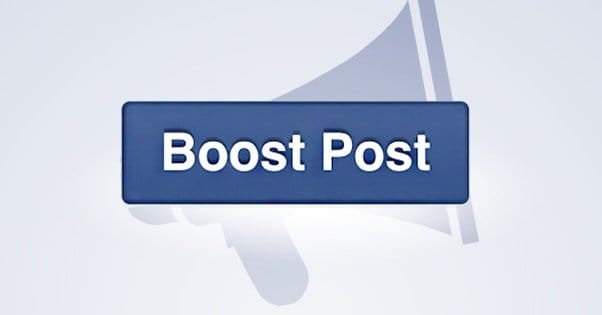
Facebook’s boost post feature is essentially a bargain bin ad creation tool. It’s a shortcut to creating a promoted post, but it lacks many of the settings and options available to people who use the normal ads system when they create post ads. The number one issue is targeting, but there are plenty of other problems I’ll cover momentarily.
Before we begin, though, I will say one thing. Boosting a post back when they debuted the feature was almost apocalyptically bad. It was terrible. Since then, it has improved quite a bit, so it’s no longer throwing money in a black hole. You can potentially see some returns now, unlike how it used to be. That said, promoting a post is still a much better option.
So, first let’s start with the problems with boosting posts.
1. You’re Limited to One Boosted Post
This is possibly one of the most detrimental and damaging limitations on boosted posts. With a limitation of only one boosted post at a time, you’re barred from being able to split test different posts, boost more than one relevant post at a time, or perform really any sort of advanced marketing.
One common split test to make with Facebook ads is different audience targeting. Create two identical ads with different audiences and measure which one gets the best response. It’s a simple way to refine your audience targeting to make sure you’re getting your message in front of the largest concentrations of the right people possible.
When you boost posts, you can’t do this sort of comparison. You have to do one test after another, by which point the post in question is probably no longer temporally relevant. Even if it is, it’s stale, and chances are a lot of the people you’re trying to show the message to have already seen it from other channels. Redundancy isn’t always a good thing, particularly when you’re paying for it under the impression that it will be unique.
Additionally, if you come across a case where you have something you need to promote at a high priority level, you can’t do it without completely cancelling your previous boosted post or letting it run out. You can’t just shift budgets around or turn off a few ads sets; it’s an all or nothing switch.
Speaking of ad sets, the entire campaign structure that Facebook has so painstakingly put in place, using ad campaigns and ad sets, doesn’t apply to boosted posts. Of course it doesn’t. You don’t need ad sets when your set is inevitably limited to 1.
2. Boosting Uses Reach Objectives
Specifically, boosting a Facebook post uses the page post engagement objective by default, and it’s not something you can change. There’s no way to tweak the ad to try to get page likes, nor can you use offers, events, or off-site conversions as objectives whatsoever. If your post you’re trying to boost is itself trying to get people to visit your site, that’s great, but your ads don’t line up with that objective.
The biggest problem with this is actually the objective type itself. Reach-based engagement is possibly the worst of Facebook’s varied objectives, in that it can be expensive to get and is simultaneously not very useful to have. Once that post is no longer valuable, that engagement is no longer valuable. If those people didn’t go to your website – and you have no way of really tracking how effective it is at referring people with an off-topic objective – they aren’t performing actions you really want them to perform.
Some people have had decent success with boosting posts for a monetary return, but it’s very tricky to do. You need to understand how boosting posts works, which is a problem because the kind of people who are most likely to boost a post are the people who don’t want to learn how the ads system works.
With an ad that happens to be optimized for engagement, getting a reasonable click rate is impossible. Between promoted posts, boosted posts, and ads made in the power editor, boosts posts have the worst click through rates of all.
3. Your Targeting Options are Limited
Boosted posts have essentially two targeting options. The first is “fans and friends of fans” and the second is interest targeting. The problem is, the interest targeting is not the full, open targeting you’re used to with real, robust ads. It’s really just interest targeting, and doesn’t have all of the demographic and location targeting that comes standard with other forms of advertising on Facebook.
What that means is that you have two options; bad and worse. The fans and friends of fans option would be fine if that second bit didn’t exist. Jon Loomer has run studies with his own audience and determined that by far, the best audience to market to on Facebook is your existing fans. Friends of fans aren’t a great option because you’re paying more for exposure to people who probably aren’t really all that interested.
Think about your real life for a second; how many of your Facebook friend share your interests? Compare that to the number that are family, that are co workers, that are old friends from school, and so forth. Those people don’t share your interests, but those are the people who are targeted by the “friends of fans” targeting option. It’s essentially only there because it allows Facebook to boost the potential reach number without actually providing a better, more targeted reach.
Meanwhile, the limitations on interest targeting mean that, while you can get people who are interested, you can’t get people who are geographically relevant or who are demographically relevant.
4. The Predicted Statistics are Lies
Time and time and again, over and over and over, you can test this on your own. Click the boost post button and play around with the statistics. You’ll see Facebook showing you a prospective reach of 25K, 50K, 80K or however much you want, based on your targeting options and your budget. They’ll predict X amount of engagement for $15, but if you set your budget just like that and you run down the ad, you’ll probably get nothing. It usually takes around 10x the predicted budget to get the predicted reach.
This is a consistent problem, but it’s worse with boosted posts than it is with using the ads manager or power editor to make your ads. The reason for this is because, with those methods, you can adjust a thousand different aspects if your reach and budget don’t work the way you want them to. You can also do very small test runs to see how well the numbers line up. When something doesn’t work the way you want, you can tweak it or adjust the ad sets. With boosted posts, you can’t make those minor adjustments, and you can’t swap them out quickly and easily. Your only recourse is to kill the boost and set another one.
Honestly, I sometimes feel like the boost post button is nothing more than a trap for Facebook to make more money from the people who don’t know any better. If you know and care about ads, you know not to use boosted posts. If you don’t know or care about ads, you probably don’t care about the boost post feature either.
Overall, it makes Facebook money, but I think it hurts them in the long run. Just take a look online at how many posts are published year after year about how Facebook ads just don’t work. How many of them are written by business owners who tried to boost a few posts and saw nothing in return? It gives their whole ads system a bad name.
5. You Can’t Optimize for Lower Costs
With Facebook ads, there’s a lot you can do to lower your cost per action, which with boosted posts is engagement. You can:
- Open up your geographic targeting to a wider area to encourage clicks from users in cheaper areas. This is done automatically by boosted posts, which don’t allow you to narrow your geographic targeting.
- Narrow down your interest targeting. This you can actually do with boosted posts, but you don’t have the assistance of power editor, so you don’t have all of the tools at your disposal. It means you’ll be hard pressed to find the right set of interests necessary to achieve the costs you want.
- Optimize your photo. With a boosted post you don’t get to split test different images, you just have to go with whatever image is already on the post. In fact, you can’t even edit the image on a boosted post, you need to remove the boost before you can edit it at all.
- Switch to an objective that encourages a high click through rate to lower your cost per action. You can’t change objectives for boosted posts, you just have to deal with the post engagement objective, which has a notoriously low click rate.
- Make your post more clickbait-like to encourage clicks. If you do this, though, you’ll suffer in terms of organic reach because Facebook doesn’t like clickbait. This just puts you in a cycle of paying more to get reach you’re losing from being clickbait.
Optimization of Facebook ads really comes down to sequential testing and finesse, both of which you can’t do with boosted posts. All you can do is take each effect you can up to 11 and hope you don’t end up with ultra-detrimental 1-cent clicks.
6. You Can’t Use Power Editor
There are only two reasons why you might want to use the boost post button. The first is ignorance; you don’t know or care to know anything about the rest of the ads system. There’s nothing I can do about that one. The other is convenience; the boost post button simplifies the ads system greatly. The solution to that is the power editor. I’ve mentioned it a few times, but what is it?
If you don’t know, power editor is a chrome extension made to create a better way of managing ads on the platform. It makes some features easier to use and adds some features you can’t find elsewhere. It’s often used to beta new features.
- Power editor has a duplicate ad button that does with one click what you can’t with boosted posts; copy all the settings to make one change for testing.
- Power editor allows you to exclude specific audiences, which is perfect for targeting and yet is a basic feature that’s not allowed with boosted posts.
- Power editor has device targeting, right on down to specific mobile devices, which is excellent for anyone marketing an app that isn’t available on every device.
- Power editor gives you simple access to every type of ad and ad placement, whereas boosted posts only allow promoted news feed post types, without the benefits of promoted posts directly.
- Power editor allows bulk ad creation which, as always, is not available for boosted posts due to it being based on having more than one ad.
Overall, power editor is just such a fabulous tool that to not use it is a shame.
7. You Can’t Create or Boost Dark Posts
One more feature of power editor is the ability to create an unpublished post. By default, you can’t boost these, because you can’t make them without power editor and if you’re making them with power editor, you’re smart enough to be avoiding the boost post button.
To make a dark post, you need to use the power editor and go to create a new campaign. Set your campaign name and budget, then go to manage pages. Create a new post and select the status/link/photo/video post type. This is a news feed post, basically. Compose your post as you would any other Facebook post, then submit to save it. It now exists, but is not published to your news feed.
From there, all you need to do is find your posts in your promote a post list and click promote on it. You’ll know it’s the dark post because power editor adds a moon icon next to unpublished posts. Set your campaign and away you go.
Unpublished posts are excellent for testing promoted posts with different audience segments, or promoting the same post with different configurations. In other words, split testing. You leave the posts unpublished because you may be making several about the same topic, and to post all of them to your news feed is very spammy.
8. Boosting is More Expensive
At the end of the day, this is probably the number one reason not to boost posts. All of the other reasons above are all underlying issues that lead to one thing. A boosted post does not reach as many people for the amount of money you spend on it. A boosted post does not have the finesse and the options necessary to tweak it into a good ad. A boosted post cannot be split tested without serious work and a lot of time invested. A boosted post does not have precise audience targeting.
A boosted post is more expensive for a similar amount of engagement, or produces less engagement for the same amount of money, as an ad. With power editor, it’s easy enough to promote posts for much the same effect, but a more optimized, more variable ad. There’s literally no reason to use a boosted post unless you simply don’t want to learn and don’t care about money.
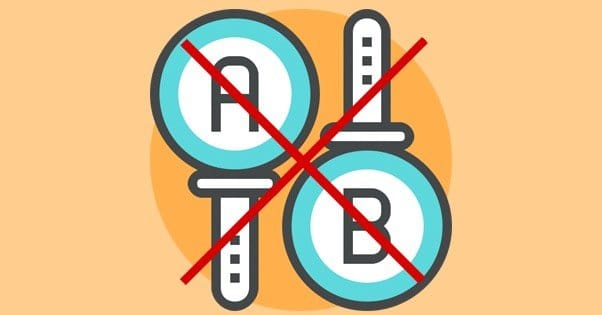
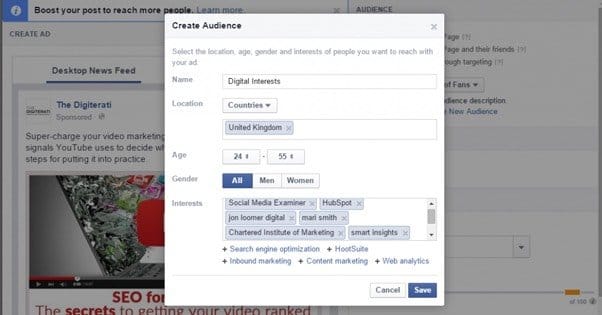
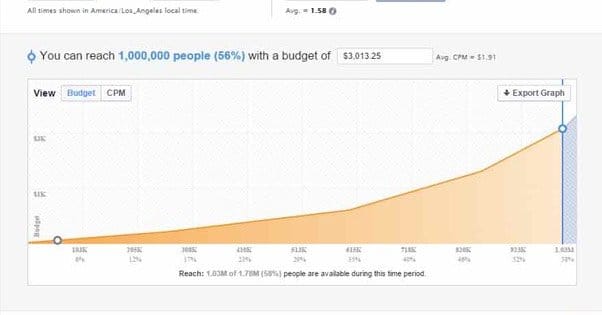
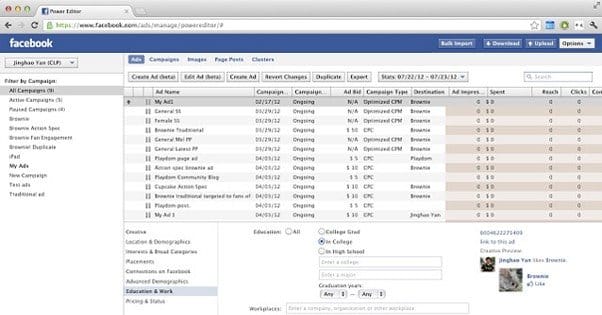
Great article, thank you. It’s helpful to me – I’m trying to learn about boosting. Yesterday I tried it, paying $30 to boost a post over 24 hours. It’s an article on organizational development – not the most exciting stuff. This morning I had 50 likes on the article I boosted. . . And virtually all of them look fake. I can’t understand why this would be so, other than the obvious: that Facebook is paying people to ‘like’ my boosted post so I’ll pay for more. But the fakes are so obvious that this just screams out for a class action lawsuit. I can’t believe FB would be up to this. Any thoughts Eric?